Book excerpt: Are high school pitchers throwing too hard too soon?

This story originally appears in the April 4, 2016, edition of Sports Illustrated. To subscribe, click here.
The following is an excerpt from "The Arm: Inside the Billion-Dollar Mystery of the Most Valuable Commodity in Sports," by Jeff Passan, to be published on April 5, 2016 by Harper. Copyright © 2016 by Jeff Passan. Reprinted with permission from Harper, an imprint of HarperCollins Publishers. Order your copy here.
At a baseball tournament on his 15th birthday, Anthony Molina threw a fastball clocked at 91 mph. About a year later, before the state of Florida allowed him to drive a car by himself, the Somerset Academy sophomore faced shortstop Milton Ramos in a high school game. Ramos was a future $650,000 bonus baby of the Mets, and a gaggle of scouts watched from behind a chain-link fence. Radar guns steadied, Molina threw the ball as fast as few other 16-year-olds ever have. Every reading said 95 mph except the one on the Mets scout’s gun. His said 96.
Scouts are inveterate gossips, and word of this flamethrower from the Miami suburb of Pembroke Pines quickly circulated through the baseball world. It was May 2014, and I was looking for a high schooler who threw hard and could illustrate the peril his gift posed. I asked a scout friend, figuring he would pass along a junior, someone from the class of 2015. Instead he mentioned a member of the class of ’16: “There’s a kid named Anthony Molina. Created a lot of buzz already.”
Even better, Molina had received an invitation to the 2014 Perfect Game National Showcase in Fort Myers, Fla., one of the most important events on the amateur baseball calendar. I had already planned on traveling to the showcase, a gathering of talent that draws scouts, executives and coaches from across the country. Another scout friend described it as “a cattle call where the cows pay $200 to be there.” Perfect Game, a company based in Cedar Rapids, Iowa, that hosted elite tournaments in addition to showcases, was a running joke—gallows humor, really, because some people believed it was killing the sport.
Among baseball people, lusting after a high school sophomore used to be a no-no. Too much could happen by his draft year. Perfect Game helped legitimize and monetize the hunger for outstanding youth players. One of Perfect Game’s partners, a company called Skillshow, which makes glossy highlight videos for high school athletes, handed out a flyer at the Fort Myers showcase that read, “Due to the increased availability of information in the computer age, the recruiting process is beginning much earlier than ever before. College coaches are starting to identify prospective recruits as early as seventh and eighth grade!”
During Molina’s ninth-grade season Miami offered him a full scholarship. He accepted, though it was just a backup plan, because arms like Molina’s are worth seven figures to major league teams. The first 55 picks of the 2015 draft were all offered signing bonuses of at least $1 million. If Anthony Molina was hitting 95 mph as a 6'5", 175-pound sophomore, his fully grown self might hit triple digits. The last righthanded high school pitcher to throw 100 mph was a Texan named Tyler Kolek. The Marlins drafted him second overall in ’14 and paid him $6 million to sign.
The Perfect Game nationals, at Fort Myers’s JetBlue Park, spring training home of the Red Sox, kicked off showcase season with aplomb. A military-grade radar system tracked every pitch to the 10th of a mile per hour and broadcast it on the scoreboard. Molina’s first pitch, a 92-mph fastball, was returned up the middle for a single. The hits kept coming—a single, a double, another double—and suddenly all the 92s and 93s looked middling. Scouts scribbled notes, undeterred; they figured Molina would hit the next year’s nationals and fare just fine—maybe with 96s and 97s.
Halfway up the first base line Nelson and Olivia Molina feared something was wrong. Nelson inspects homes for a living; Olivia has spent nearly three decades as a secretary for Carnival Cruise Lines. They are both Cuban immigrants. When their son trudged into the stands after his game, they were concerned. “Your arm good?” Nelson asked.
Anthony nodded. Olivia wanted more than a nod. “How’s your arm?” she asked. Anthony sat down. “It’s all right,” he said, and she started massaging his back.
A man named Roger Tomas approached. “Arm all right?” he asked. Tomas is Anthony Molina’s adviser, a code word for agent. His duty is to deliver a healthy right arm to the draft in June 2016.
Molina seemed to have been doing this forever. At 13 he played a tournament at the National Baseball Hall of Fame and Museum in Cooperstown, N.Y. He was 6'4" and could dunk a basketball. Olivia had to take his birth certificate everywhere to prove his age. Around that point, he said, “I just started blowing it by kids, and kid after kid would just walk back to the dugout with eyes wide open.”
Anthony Molina was baseball’s evolutionary archetype, the product of a system that fetishizes the next big thing. Perfect Game posts national player rankings for every age group starting with freshmen in high school. “Kids obsess over the rankings,” Nelson Molina said. Even after his 2014 performance at nationals, Anthony Molina was the No. 1 player in the class of 2016.
“He has no clue how talented he is,” said Richie Palmer, his coach with Elite Squad, a Miami-area high-level travel team. “He doesn’t realize he can be a multimillionaire in a couple of years.”
****
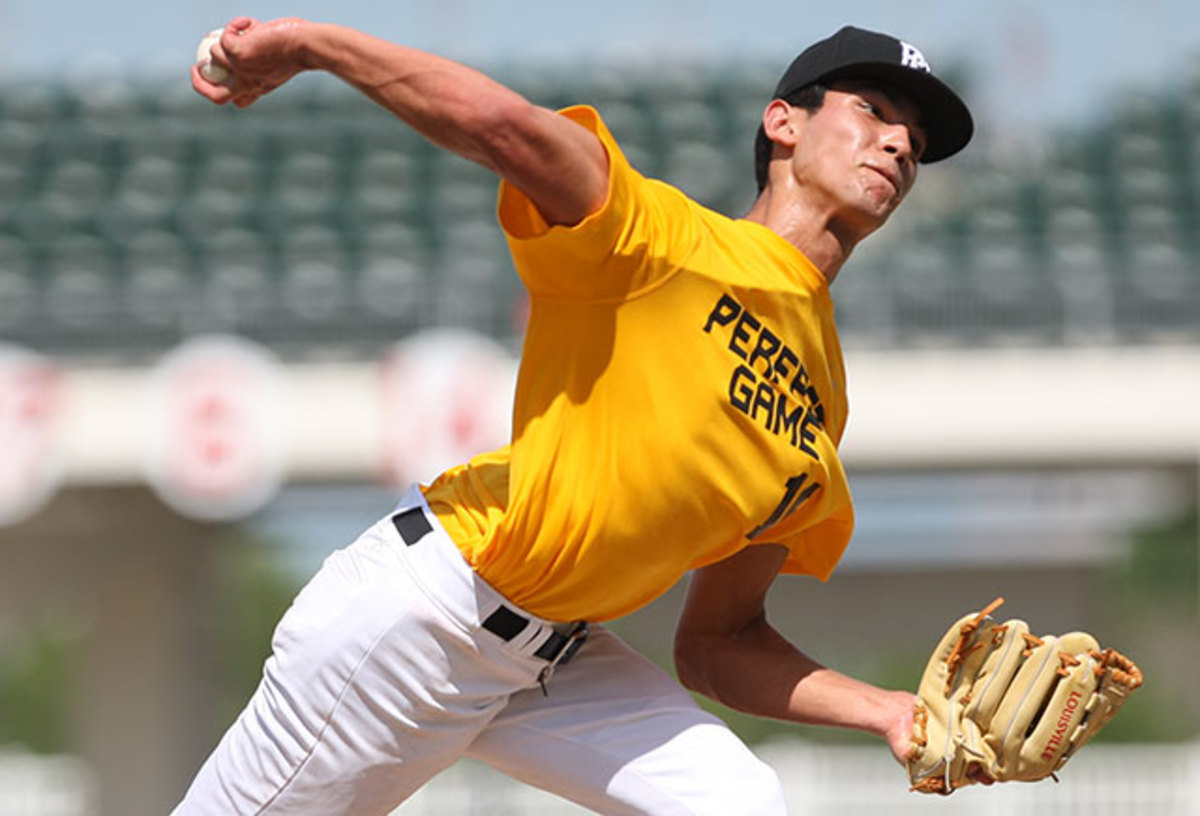
I’ve written about baseball for a dozen years now, and I’ve seen nothing that unites people in the industry quite like enmity for Perfect Game. The complaints can be summed up like this: What at first seemed to be a useful idea—bring all of the best players together in one place so scouts could see talent against talent and teams could skimp on travel expenses—morphed into an outsized machine that profits off teenage boys and glory-hungry parents.
Baseball’s developmental system is almost indistinguishable from basketball’s oft-criticized AAU apparatus. Youth travel baseball has become at least a nine-figure industry, preying on parents’ insatiable desire to secure college scholarships and high-paying major league futures for their children. In 2015, Perfect Game held more than a dozen events for nine-and-under teams. The same year the U.S. Specialty Sports Association, a governing body for slo-pitch softball that worked its way into amateur baseball, ranked 30 four-and-under teams—as in, preschoolers.
To ascend those rankings, or to get noticed by Perfect Game, children must play. So in warm-weather states they hit and pitch constantly. Year-round baseball is a bane of the medical community, which advocates participation in at least one other sport to lessen the chance of injury. A study by the American Sports Medicine Institute (ASMI) found that kids who pitched competitively for more than eight months of the year were five times as likely to undergo arm surgery. Another study, published by the American Orthopaedic Society for Sports Medicine, linked warm-weather climates with a higher incidence of Tommy John surgery.
The significant rise in Tommy John cases dovetails with the expansion of Perfect Game in 1998 from Iowa to the talent hotbeds of Texas and Florida. Within six years Perfect Game was holding 25 national showcases annually, and the number of youth and high-school-aged patients among Dr. James Andrews’s ulnar collateral ligament (UCL) reconstruction cases jumped from 4% in 1997 to 26% in 2003. Andrews now estimates that one-third of his patients are under 18. He doesn’t call out Perfect Game by name. Next to nobody does. It is a powerful entity, and even top major league officials decline to talk about it on the record.
• MORE MLB: Check out all 30 team previews for the 2016 season
In his telling of Perfect Game’s origin story, Jerry Ford was just a parent in Cedar Rapids who would’ve paid anything to get scouts to see his son. Ben Ford eventually pitched for three big league teams, though it wasn’t because people had flocked to his hometown to see him. Iowa’s high school baseball season started around Memorial Day, a week or two before the amateur draft, and the paucity of scouts who showed up to watch the Iowa Wesleyan College teams that Jerry Ford coached convinced him to start a new business. He outfitted a spartan facility where baseball players could train over the winter and he started a spring and fall league to draw scouts.
Ford built Perfect Game to conquer Iowa, not the baseball world. At first it did neither. The baseball industry is based on reputation, and Perfect Game meant nothing. Ford bled money. “I’ve often told people, had we been a pizza shop, we’d have been gone a long time ago,” he told me. “But the thing that kept us going was [that] we were benefiting a lot of kids. We just couldn’t figure out how to make any money.”
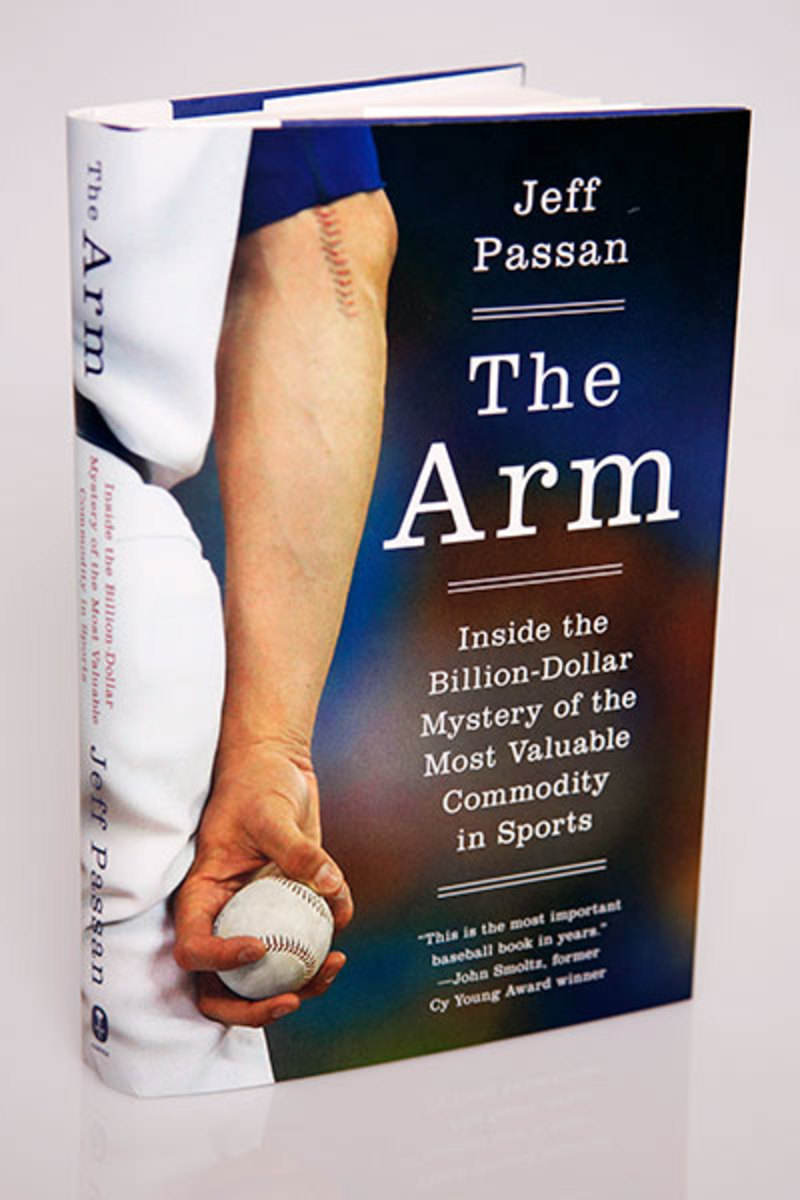
In the fall of 1999 a Cedar Rapids businessman named Mark Hanrahan walked into Perfect Game’s offices. He was indebted to Ford, who had helped teach Hanrahan’s son Sean, a high school player, to hit for more power. Perfect Game needed a bailout; the gas company was threatening to turn off its heat. Hanrahan bought a majority share of Perfect Game and funded it for five years, through its first growth cycle. “I’d sit in my office, and I’d write checks for $25,000 and $50,000,” Hanrahan said. “I had blind allegiance to Jerry. [He] is a goddamn genius.”
By the time the business turned around, Hanrahan had sold his share to a New Jersey man named Jose Rodriguez. Ford was still running the company and wanted it back. Eventually he wrestled Perfect Game away from Rodriguez for an amount neither would discuss, and by 2014 Perfect Game took in $15.5 million in revenue, according to Ford, and netted $1 million—double its profit of three years before. Now Perfect Game is to youth baseball what Kleenex is to facial tissue. “We want [our] corporate identity to be [like] the M of McDonald’s, the swoosh of Nike,” said Patrick Ebert, Perfect Game’s managing editor, on a video posted to its YouTube channel, “so when people see the PG, we don’t even need to say it’s Perfect Game.”
On its website and social media accounts, Perfect Game breathlessly recaps its showcases, games and other events. Years before Major League Baseball used radar technology to grok on-field goings-on, Perfect Game employed the Trackman radar system to capture pitching velocity and batted-ball exit speed. It implicitly encourages young players to throw harder, run faster, hit longer, all so they can scale the leader boards that Perfect Game posts online.
Perfect Game’s biggest asset—the one that makes its critics cringe—is that major league teams find it indispensable. Scouts show up in droves at all its big events, validating a system that is rife with moral hazard, in which coaches are often forced to pit their own futures against what’s best for the athletically gifted children who advance their careers. “The problem,” Ford said, “is there’s this thing called winning. That’s what seems to make people crazy, not Perfect Game.”
****
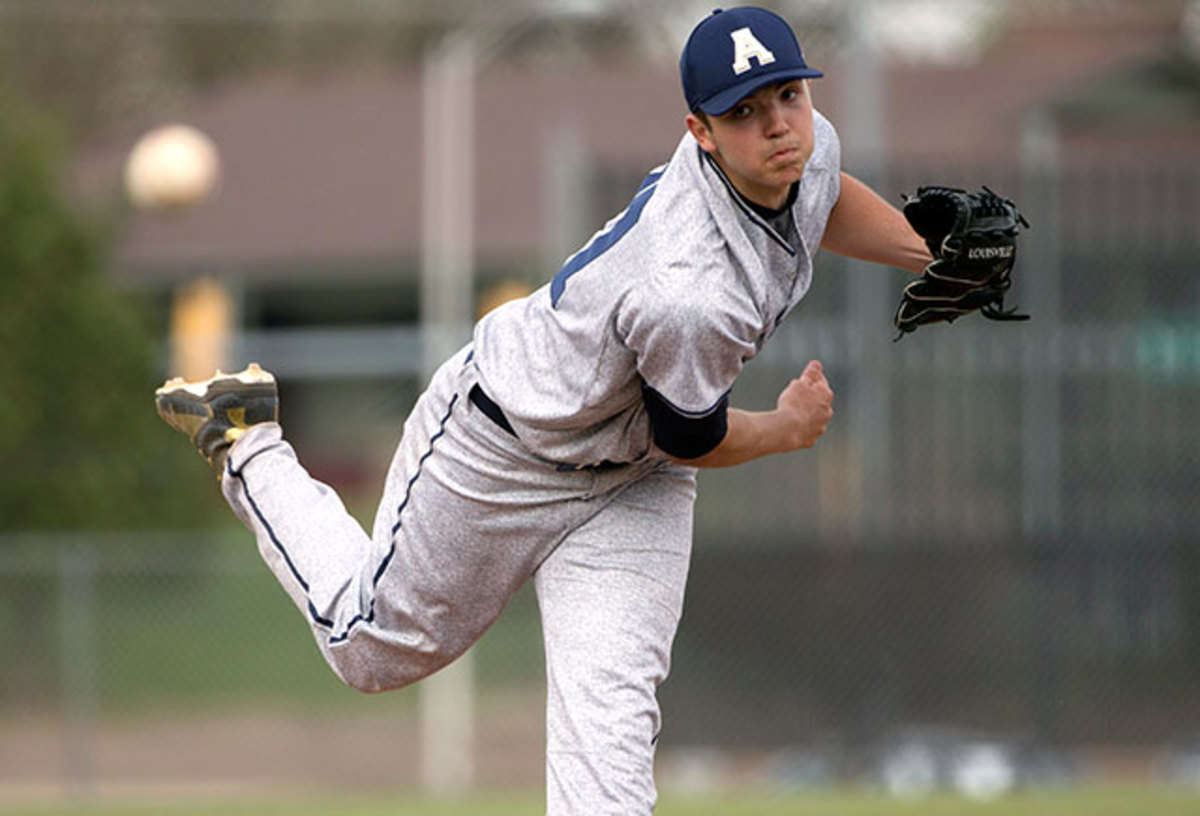
LakePoint Sports sprawls over 127 acres, a billion-dollar mixed-use complex in Emerson, Ga., about 30 miles north of Atlanta. It has soccer fields, lacrosse fields, volleyball courts, a golf course and 16 synthetic-turf-covered, scoreboard-equipped, night-lit, full-sized baseball fields. Major league teams are envious of the place. Perfect Game calls it home.
Every summer, about three weeks after nationals in Fort Myers, Perfect Game holds the WWBA National Championship at LakePoint, its premier wood-bat tournament. When 16-year-old Riley Pint took the mound there on July 9, 2014, he had never before attended a Perfect Game event; scouts knew him by reputation only. He popped fastballs of 92, 93, 94, 95 and 96 mph. Then he threw a one-knuckle spike curveball that was every bit as good as his fastball.
Pint lives in suburban Kansas City, where baseball is a seasonal endeavor. Rather than spend his winters at indoor baseball facilities, he played basketball. I first met him at a basketball practice at Saint Thomas Aquinas, a private school in Lenexa, Kans., where he was running circles around his teammates when he wasn’t running wind sprints. Pint stood 6'4" and weighed 190 pounds, with a perfectly proportioned body that could take on another 30 pounds. He was the argument against specialization, a kid who didn’t touch a baseball once the weather turned. “My dad is always talking about that,” Pint said. “During the winter, when we’re taking three, four months off, he says, ‘You know there are kids in California who still haven’t put down a ball.’ It’s hard to put down a ball for that long, but he tells me we have bigger and better things ahead.”
Book excerpt: Ty Cobb ruled baseball, until Babe Ruth stole his spotlight
Riley’s father, Neil, pitched in college at Iowa State. He decided he wouldn’t allow the pressures of elite youth baseball to stunt his child’s development. Don’t pay attention to the rankings. Stay away from all but the largest showcases until his senior season. Neil and his wife, Missy, don’t worry about Riley. His grade point average is a steady 3.5. The most dangerous beverage he drinks is Coke. He never got into video games. He enjoys history documentaries. “My two favorite subjects,” he said, “are the Vietnam War and World War II.” He asks a different girl to each dance because Neil worries that a girlfriend could interfere with school and sports.
“I feel kind of bad sometimes for him,” Neil said. “I’m sure he wants a girlfriend.” And then the commiseration vanishes, drowned out by the clock that ticks in Neil’s head. Every day is one closer to June 2016 and a delightful choice: life-changing money from a major league team or a full scholarship to LSU, which made the offer to Riley after his breakout WWBA tournament. Riley’s friends joke with him about it, asking what it’s going to feel like to be a millionaire. “I walk away or change the subject,” he said. “It’s kind of awkward to talk about.”
As good as Pint’s knuckle-curve was at LakePoint, the velocity on his fastball bowled over scouts and inspired a story on the Perfect Game website. Perfect Game’s love affair with velocity is much the same as baseball’s: seemingly unbreakable, even as evidence linking velocity and injury mounts. The nearly one-third of major league pitchers who average 93 mph on their fastballs are almost twice as likely as pitchers who don’t crack 90—21.2% to 11.2%—to end up on the disabled list the next season, according to a study by Jeff Zimmerman of the website The Hardball Times. For those who throw 96-mph-plus, the chances of a DL trip the next year jump to 27.7%.
Molina and Pint hit the 96-mph mark as 16-year-olds, and Pint didn’t stop there. Early in his junior season, one fastball against DeSoto High hit 98. Pint’s adviser, Greg Schaum, sat in the stands with his boss, agent Jason Wood, a former college player at Saint Louis. Wood, mystified that a high school kid could throw like Pint, asked a question as legitimate as it was rhetorical: “When’s enough enough?”
****
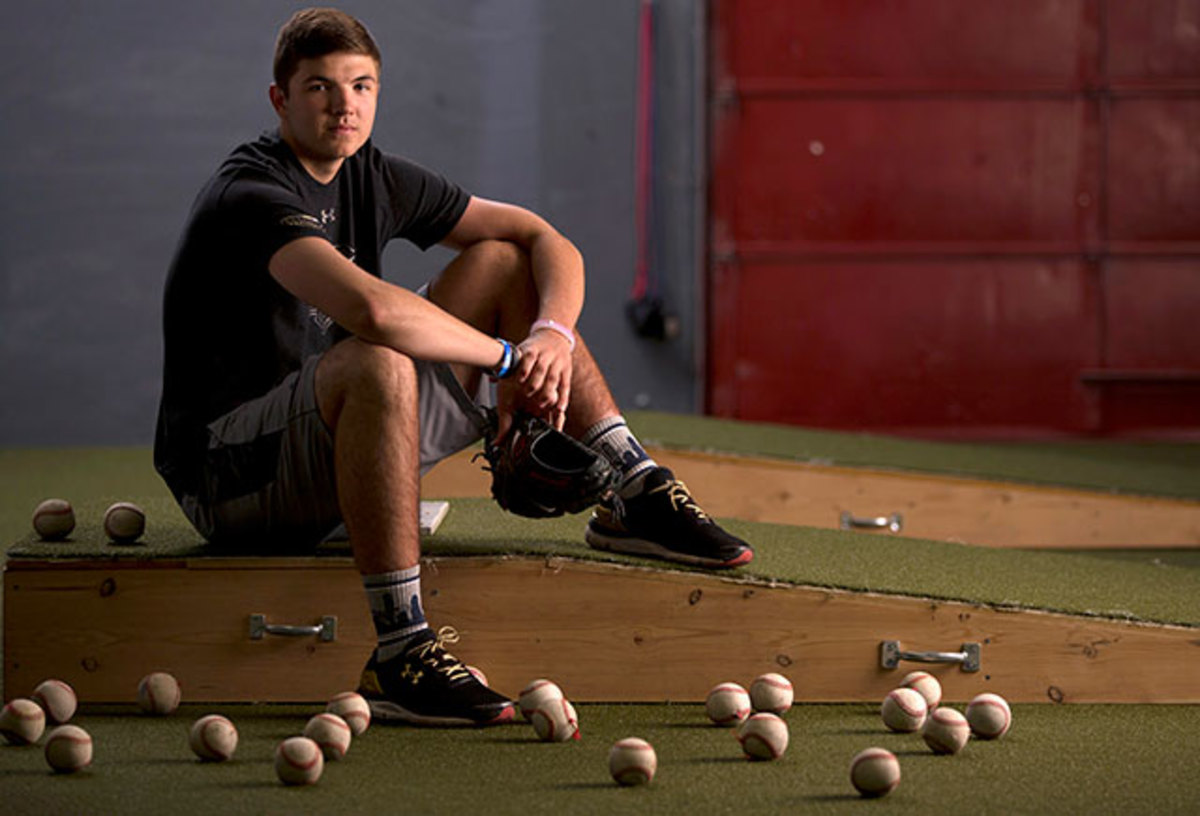
When Neil Pint informed Perfect Game last May that his son had chosen to skip its most important event of the year to attend a competitor’s event, in came the reinforcements. Jerry Ford goes to ballparks all the time. He’s a scout at heart, a magnate second. The No. 1 player in the country does not turn down a spot in the Perfect Game All-American Classic, held every August in San Diego’s Petco Park, home of the Padres.
The Under Armour All-America game in Chicago fell on the same weekend, however, and its organizers had called Neil Pint first. He was an easy sell. His extended family, still in Iowa, could drive to Wrigley Field to watch Riley pitch. Almost certainly he would start the game, which the MLB Network would broadcast. Neil said yes.
About a week later Perfect Game called. Neil apologized, but Riley couldn’t come. He didn’t break promises, and he had pledged to go to Chicago. Perfect Game representatives called Pint’s advisers, Schaum and Wood, and even the coaching staff at LSU. When that didn’t work, Ford himself paid the Pints a visit in Kansas City. Perfect Game’s inability to tolerate rejection did not endear the company to Riley. “I don’t really like when people try to tell me what to do,” he said. “I’ve made my decision.”
It wasn’t that Pint thought too much of himself. He was a young man of his word. If an agent tried to recruit him away from Schaum, he said thanks but no thanks. Two lieutenants for Scott Boras, the all-powerful agent, went to what seemed like every one of Pint’s games. Pint paid them no mind. And when USA Baseball wanted him to headline the 18-and-under national team, he said no, because those conversations with Neil about taking care of his arm resonated and he didn’t want to throw too much. The numbers supported his choice: A 10-year study by ASMI showed that pitchers who threw more than 100 competitive innings in a calendar year were 3 1/2 times likelier than less active pitchers to suffer a serious elbow or shoulder injury.
The lengths to which Pint went to protect himself were empowering. He was proof that the right kids could own the system and not vice versa. “I don’t pay attention to it much,” Pint said of Perfect Game’s website. “The rankings are cool, I guess, to see where you’re at. I know some people who are just excited when they see their name on Perfect Game.”
Anthony Molina’s name more or less disappeared from the site late in 2015. His ascent had been fraught with peril in the first place. As a freshman he went to West Broward High, near Pembroke Pines; then he transferred to American Heritage, a local powerhouse, but got kicked out after he was caught with $15 worth of weed. (He said he was just holding it for a friend.) After spending his sophomore season at Somerset Academy, a charter school, he returned to West Broward for his junior year. But after school on Jan. 13, 2015, Molina punched a kid in the face and blackened his eye. The kid called it a cheap shot. Molina, then 17, said it was self-defense. That evening police officers came to his house and arrested him, and he spent the night in detention. The next morning he was charged with aggravated battery, a felony. He cried. So did his mother, Olivia.
“I see two versions of Tony,” said Palmer, his travel-ball coach. “I see the great kid with me. And I see the f---up. It has nothing to do with the arm and everything to do with character.”
Six months earlier, at nationals, all that mattered was the arm. Before Molina pitched, he was handed a sheet of blank mailing labels and sent to a table in the empty concourse. He used red, blue, green and purple pens to sign dozens of labels that would be pressed onto limited-edition trading cards made by Leaf for Perfect Game. Each card is emblazoned with a number. For $29.99 on eBay anyone could have a gold-bordered, autographed Anthony Molina card—number 37 of 50—with an out-of-focus picture of him from nationals.
“I deal with five Anthony Molinas every summer,” Palmer said. “I try to tell him, ‘You’re not special,’ even though he can be. I’ve seen guys like him throw it away. And that’s the path he’s going on.”
****

The culture of punishing workloads for college baseball pitchers is nearing extinction. The pitch-count shame police ensure that coaches who are habitual offenders either change or run the risk of losing recruits. Scrutiny of high school kids isn’t nearly as strong. In 2014, Dylan Fosnacht, a senior at Rochester (Wash.) High, threw 194 pitches over 15 innings in a district playoff game. Fosnacht didn’t care. He wasn’t planning on playing baseball beyond high school. “Just trying to get a much-needed win for my team,” he tweeted at former Cy Young Award winner David Price, then with the Tigers, who had called Fosnacht “a beast” before suggesting that his coach be fired.
Perfect Game is now an industry leviathan with a reputation that does not match Ford’s description of the company to me. “I really don’t think we are causing anyone to throw year-round,” he said. “We certainly don’t promote that.”
Not actively. Perfect Game does hold year-round showcases, and kids who don’t have Pint’s or Molina’s natural gifts feel compelled to attend out of fear that their rankings will drop if they don’t. Agents trade stories about Perfect Game imploring kids to show up at a certain event.
Ford says he just wants to grow baseball. In recent years, he said, he stepped in at a tournament and shut down a top prospect whose coach was about to pitch him twice in one day. Ford can’t micromanage every game, though. Perfect Game’s worst crime was accidental: It hatched an industry with inadequate oversight.
Book excerpt: Pedro Martinez talks 2003 season, rivalry with Yankees
The prospect of Major League Baseball trying to exert control over Perfect Game to protect players’ arms is not far-fetched. Two of the sport’s highest-ranking power brokers told me that transferring the youth apparatus to MLB’s hands was a priority, although wresting control from an established company with such reach would take years. Perfect Game could help its cause by prioritizing players’ health, deemphasizing year-round baseball and creating an app that allows coaches, families or kids to enter pitch-count data so a player’s entire record is accurate and available. Instead, Perfect Game is creating showcases for nine-year-olds.
In early 2015 the company announced a spin-off called the Series, which involves three types of events: scouting combines, tournaments to find the best kids from a geographic area, and a national tournament pitting those local teams against one another, ages nine to 18. With the Series, Perfect Game reinforces every stereotype about itself: too young, too soon, too much.
Ford tries to rationalize it: By keeping showcases local, families don’t need to travel as much. Measuring kids before they hit double digits also gives Perfect Game the ability to build a powerful database of information willingly given by children. “Let’s say your son, a seven-year-old kid, shows us traits that Mike Trout had at the same age,” Ford says. “What that means to me is we need to keep that kid involved in baseball. We lose so many kids to other games because, quite honestly, the other games are sometimes more exciting or accessible to those kids.”
I didn’t walk away from my conversation with Jerry Ford thinking Perfect Game is any more evil or greedy than the rest of the world that fattens itself on youth baseball. Just that he was lost in his idealism. Of all people, Ford should be hypersensitive to the issue of overpitching: His son, Ben, for whom he created Perfect Game, needed Tommy John surgery in 2001.
****
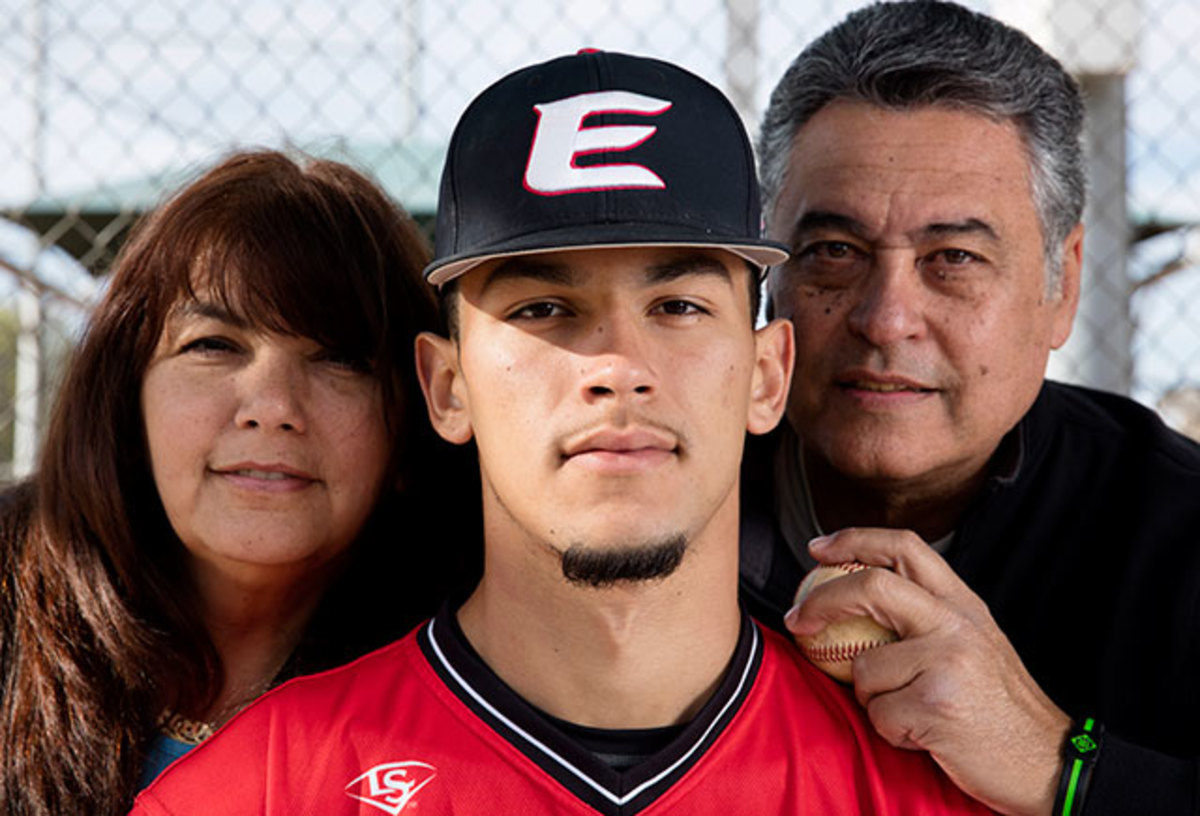
Nelson Molina expected the phone call. It was the spring of 2015, and on the line was a coach from Miami. He was pulling Anthony’s scholarship offer. But Nelson never stopped sticking up for his son. The marijuana episode “was a misunderstanding,” he said, and the school transfers were “not a big deal.”
Molina took a few months away from baseball, and when he came back, his grades were up. He was practicing with Elite Squad again, even as his lawyer, Lyon Greenblatt, planned his defense. In June the charges were dropped altogether, according to Greenblatt and Nelson Molina, and back went Anthony into the full grind of showcase ball.
Though scouts nattered away about Molina’s bad makeup, the episode did little to diminish his standing in elite showcase events. Under Armour had invited him back to its All-America Game, alongside Pint. And of course Perfect Game expected him to show up at nationals. His fastball there sat 89 to 94 mph. The extra velocity never came, not after 27 Perfect Game events and not this spring as he angled to find a team that would bet on his potential.
Meanwhile, Pint began treating himself more like a standard modern baseball prodigy. Last summer he flew around the country for showcases. In the winter he skipped basketball after a couple of twisted ankles, a concussion, a dislocated finger and a shot to the nose the previous season. He added significant weight and muscle and is now a hearty 6'4" and 215 pounds. He also did something nobody in the baseball world ever had seen.
Scouts flocked to the facility in Lenexa where Pint worked out almost every day. About 15 trained their radar guns on him as he pumped fastballs. Soon the room went silent. The displays on the guns spit out three figures that almost never go together: 102. And it wasn’t one lucky pitch or one miscalibrated gun. Every scout clocked 102 mph multiple times. Even if New Jersey lefthander Jason Groome had passed him in Perfect Game’s rankings, Pint held a new title: hardest-throwing high schooler ever.
“I didn’t know I was going to throw that hard,” Pint said. “I think it was the adrenaline.”
Whatever it was, it thrust Pint back into the discussion for the top pick in the draft. Because Pint is a history buff, he knew the number of righthanded high school pitchers who had gone with the first overall pick: none. Eight righthanders were chosen second, some successful (Josh Beckett, J.R. Richard), some spectacularly unsuccessful (Jay Franklin, Tommy Boggs). The latest two were Jameson Taillon, who underwent Tommy John surgery in April 2014, almost four years after the Pirates drafted him, and the Marlins’ Kolek, whose 100-mph fastball in high school raised suspicions about his long-term viability. The only three lefthanded high schoolers taken No. 1 were David Clyde (1973) and Brien Taylor (’91), both of whom were out of baseball before their 27th birthdays because of arm problems, and Brady Aiken, whose career didn’t even start before he needed Tommy John last year.
Train and pray. That’s all Pint could do. His coaches praised his mechanics, and scouts liked his smooth delivery. Not once had his arm hurt. Nonetheless, Neil Pint paced every time his son started a game.
In early May 2015, Saint Thomas Aquinas traveled to Blue Valley West, a high school in the south Kansas City suburbs. Pint struggled to command his fastball. A couple of ground balls with legs reached the outfield. He issued a four-pitch walk. His first baseman missed an easy out. And suddenly Pint trailed 5–0. He left after 51 pitches. “Worst I’ve ever seen him,” Neil said.
Which, he suggested, wasn’t a bad thing. The night before the game Pint had spent a few hours with friends playing basketball. His dad had wondered if that was wise with a game early the next day, but he didn’t belabor the point. He wants Pint to make more of his own decisions and recognize their consequences.
Normality long ago vanished for kids like Riley Pint. Nothing illustrated this better than the line of questioning after the game. “Your arm O.K.?” his father asked. Pint nodded.
“You good?” asked Schaum. Pint nodded again.
“How’s your arm?” asked Missy.
Eventually the questions changed. Neil asked when his son was going to get a haircut and if he needed food or Gatorade. Neil knew better than to keep pushing.
“As long as you’re healthy is all,” he said. “Right?”
